 MOUNT KELUD, Indonesia-Tens of thousands of people were ordered by police-some at gunpoint-to leave their homes on the slopes of one of Indonesia's deadliest volcanoes Friday after a series of underground tremors heightened fears of an imminent eruption. Scientists raised the alert at Mount Kelud to the highest level earlier this week, pointing to sharply rising temperatures in the lake of its crater and violent rumbling beneath.There was an hour-long spike in the underground tremors and temperature on Friday when gas or magma tried to break through the crater lake, said Surono, a government volcanologist who goes by only one name. The activity then subsided."Anything could happen anytime now," he said, noting that a similar pattern emerged days before the last major eruption in 1990."I afraid pressure behind the magma will build up again and that next time it will explode."The 1990 eruption of Mount Kelud, located on Indonesia's densely populated island of Java, killed dozens. In 1919, a powerful explosion of the volcano destroyed dozens of villages and killed at least 5,160 people.Authorities ordered 116,000 people living along the volcano's fertile slopes to leave their homes Friday, but many have refused, saying they needed to tend to their crops and animals and protect against possible looting.Police forced many people to leave at gunpoint, calling the situation "critical.""If we didn't force them—in this case with a showing of firearms-the villagers would not budge," said police chief Col. Tjuk Basuki, adding that residents have been repeatedly warned about the danger. "We had no choice but to do this for their safety."Sidho, a farmer who goes by only one name, continued to work in his fields even though he was among those injured in the last major eruption in 1990."I was hiding under the table when stones started pouring into my house. Once, I got hit on my head," he recalled.Sugeng Walujo, a 37-year-old villager, also said he does not plan to leave. He, like many others, believes he will be protected if he follows the guidelines of an ancient myth."If I don't scream for help or turn on any lights, the lava and ashes will not reach my home," he said. "I'm not going anywhere."Many people who left the mountain were staying in temporary shelters along its base. Some held Islamic prayers in a tent Friday, where a preacher told them to remain calm and follow the advice of authorities.The U.N. said Friday that the World Health Organization has activated 100 medics, put 200 health facilities on alert and established 41 outreach health posts because of the volcano. Emergency health kits, masks and other equipment were distributed.At least five residents were hospitalized after breathing poisonous gases, said Palal Santoso, a government spokesman.Sally Kuhn Sennert, a volcanologist with the U.S. Geological Survey and the Smithsonian's Global Volcanism Program, said rising temperatures in the crater lake, an increase in the size and intensity of gas plumes, and a change in the ground tilt—all currently observed at Mount Kelud—indicate there might be an eruption, but they do not guarantee one."The temperature has fluctuated in the past without an eruption," she said.However, she added that Kelud has also erupted before without warning, indicating authorities were probably correct in taking precautions.Sennert said the presence of a crater lake at the volcano is of particular concern because "when magma interacts with water it's pretty explosive.""When you have a large water source like that, the eruption could breech the sides of the lake and release a huge volume of water," which would pick up ash and rock as it headed down the mountain, creating a giant mud flow, she said.Scientists have reduced the water level in the lake to minimize the danger, said Lee Siebert, director of the Smithsonian program. "There have been many fewer fatalities, so they've been successful, but it's still a volcano," he said.Indonesia, which has about 150 active volcanos spread across 17,500 islands, sits on the so-called "Ring of Fire"—a series of volcanos and fault lines stretching from the Western Hemisphere through Japan and Southeast Asia.
MOUNT KELUD, Indonesia-Tens of thousands of people were ordered by police-some at gunpoint-to leave their homes on the slopes of one of Indonesia's deadliest volcanoes Friday after a series of underground tremors heightened fears of an imminent eruption. Scientists raised the alert at Mount Kelud to the highest level earlier this week, pointing to sharply rising temperatures in the lake of its crater and violent rumbling beneath.There was an hour-long spike in the underground tremors and temperature on Friday when gas or magma tried to break through the crater lake, said Surono, a government volcanologist who goes by only one name. The activity then subsided."Anything could happen anytime now," he said, noting that a similar pattern emerged days before the last major eruption in 1990."I afraid pressure behind the magma will build up again and that next time it will explode."The 1990 eruption of Mount Kelud, located on Indonesia's densely populated island of Java, killed dozens. In 1919, a powerful explosion of the volcano destroyed dozens of villages and killed at least 5,160 people.Authorities ordered 116,000 people living along the volcano's fertile slopes to leave their homes Friday, but many have refused, saying they needed to tend to their crops and animals and protect against possible looting.Police forced many people to leave at gunpoint, calling the situation "critical.""If we didn't force them—in this case with a showing of firearms-the villagers would not budge," said police chief Col. Tjuk Basuki, adding that residents have been repeatedly warned about the danger. "We had no choice but to do this for their safety."Sidho, a farmer who goes by only one name, continued to work in his fields even though he was among those injured in the last major eruption in 1990."I was hiding under the table when stones started pouring into my house. Once, I got hit on my head," he recalled.Sugeng Walujo, a 37-year-old villager, also said he does not plan to leave. He, like many others, believes he will be protected if he follows the guidelines of an ancient myth."If I don't scream for help or turn on any lights, the lava and ashes will not reach my home," he said. "I'm not going anywhere."Many people who left the mountain were staying in temporary shelters along its base. Some held Islamic prayers in a tent Friday, where a preacher told them to remain calm and follow the advice of authorities.The U.N. said Friday that the World Health Organization has activated 100 medics, put 200 health facilities on alert and established 41 outreach health posts because of the volcano. Emergency health kits, masks and other equipment were distributed.At least five residents were hospitalized after breathing poisonous gases, said Palal Santoso, a government spokesman.Sally Kuhn Sennert, a volcanologist with the U.S. Geological Survey and the Smithsonian's Global Volcanism Program, said rising temperatures in the crater lake, an increase in the size and intensity of gas plumes, and a change in the ground tilt—all currently observed at Mount Kelud—indicate there might be an eruption, but they do not guarantee one."The temperature has fluctuated in the past without an eruption," she said.However, she added that Kelud has also erupted before without warning, indicating authorities were probably correct in taking precautions.Sennert said the presence of a crater lake at the volcano is of particular concern because "when magma interacts with water it's pretty explosive.""When you have a large water source like that, the eruption could breech the sides of the lake and release a huge volume of water," which would pick up ash and rock as it headed down the mountain, creating a giant mud flow, she said.Scientists have reduced the water level in the lake to minimize the danger, said Lee Siebert, director of the Smithsonian program. "There have been many fewer fatalities, so they've been successful, but it's still a volcano," he said.Indonesia, which has about 150 active volcanos spread across 17,500 islands, sits on the so-called "Ring of Fire"—a series of volcanos and fault lines stretching from the Western Hemisphere through Japan and Southeast Asia.As in the days of Noah....

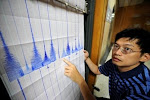
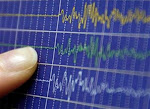
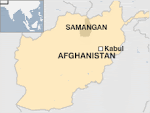







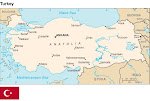
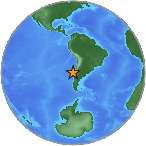




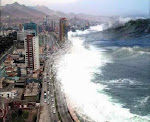

.jpg)


.bmp)
No comments:
Post a Comment